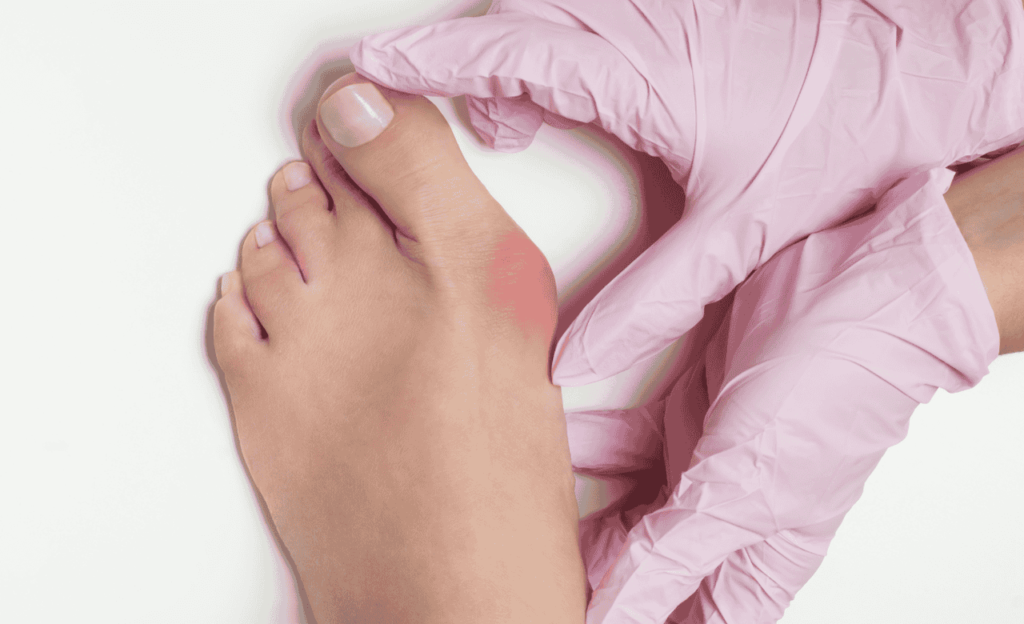Bunions are a common foot deformity that can cause discomfort and pain. At Texas Foot and Ankle Consultants, we specialize in treating a wide range of foot and ankle conditions, including bunions. In this blog post, we will dive into what bunions are, what causes them, common symptoms to watch out for, and the treatment options available to provide relief and improve your quality of life.
Definition and Formation
Bunions, medically known as Hallux Valgus, are bony bumps that develop at the base of the big toe. They form when the big toe starts to deviate inward, towards the other toes, leading to the metatarsophalangeal (MTP) joint’s misalignment. Over time, the misalignment causes the joint to protrude, creating the characteristic bunion bump.
Causes of Bunions:
Genetics and Foot Structure
Bunions can have a hereditary component, meaning they may run in families. If your parents or grandparents had bunions, you might be more prone to developing them as well. Additionally, foot structure can play a role. Flat feet or low arches can contribute to the misalignment of the MTP joint, increasing the risk of bunions.
Footwear Choices
Wearing tight, narrow, or ill-fitting shoes can exacerbate bunions or even lead to their development. High heels, in particular, put excessive pressure on the front of the foot, pushing the toes together and increasing the likelihood of bunions.
Common Symptoms of Bunions:
Bunions can cause a range of symptoms, including:
- A bony bump at the base of the big toe.
- Redness, swelling, or tenderness around the affected area.
- Pain or soreness, especially when wearing shoes or putting pressure on the foot.
- Corns or calluses may develop where the first and second toes overlap.
- Limited movement of the big toe.
- Treatment Options for Bunions:
Non-Surgical Approaches
Footwear Changes: Wearing wide, comfortable shoes with adequate toe room can reduce pressure on the bunion and alleviate discomfort.
Orthotic Inserts: Custom-made shoe inserts can help correct foot mechanics, reducing the progression of the bunion and relieving pain.
Pain Management: Over-the-counter pain relievers or anti-inflammatory medications may offer temporary relief from bunion-related discomfort.
Padding or Taping: Applying protective padding or taping around the bunion can cushion the area and prevent further irritation.
Surgical Interventions
If conservative measures fail to provide sufficient relief, surgical intervention may be considered. There are various surgical procedures to address bunions, and our experienced foot and ankle specialists will recommend the most suitable option based on your specific condition.
Prevention is Key
While bunions can have genetic components, certain lifestyle changes can help prevent their development or slow their progression:
- Choose Proper Footwear: Opt for shoes that have a wide toe box, low heels, and provide ample arch support.
- Exercises: Perform regular foot exercises to strengthen the muscles and improve foot alignment.
- Avoid High Heels: Limit the use of high heels or tight-fitting shoes, especially for extended periods.
Conclusion
At Texas Foot and Ankle Consultants, we understand the impact that bunions can have on your daily life. If you suspect you have a bunion or are experiencing any foot discomfort, we encourage you to schedule a consultation with our skilled podiatrists. Early intervention and proper treatment can lead to better outcomes and a more comfortable, active lifestyle. Don’t let bunions keep you from enjoying life to the fullest!


